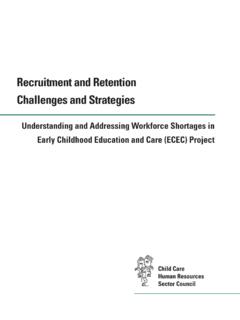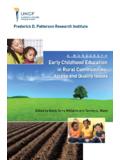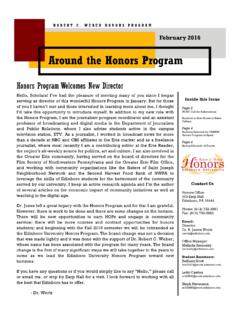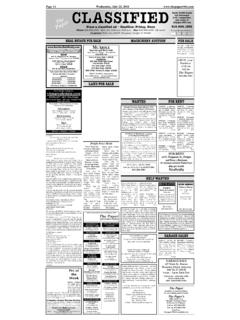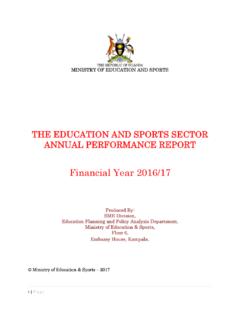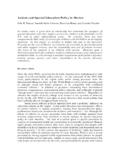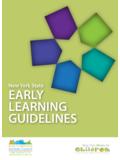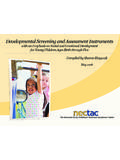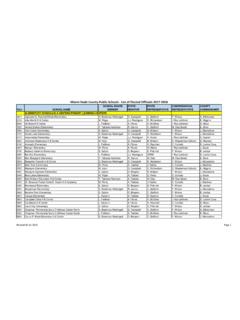Transcription of Occupational Standards - ccsc-cssge.ca
1 Occupational Standards for Early Childhood Educators Child Care Human Resources Sector Council Occupational Standards for Early Childhood Educators. ISBN 978-0-9781116-2-5. Issued also in French under the title: Normes professionnelles des ducatrices et duca- teurs l'enfance. ISBN 978-0-9781116-2-5. To request copies of this document or information contact: Child Care Human Resources Sector Council Suite 714, 151 Slater Street Ottawa, Ontario, Canada. K1P 5H3. 1-866-411-6960. Consultants: Future Learning Inc. Editor: Ascribe Marketing Communications Inc. Translation: Sylvie Payeur Layout: Kim Nelson Design Original Layout Design: Hangar 13 Art & Design Cover design: Richard Proulx All rights reserved.
2 Reproduction of this publication in part or in whole, without written permission of the Child Care Human Resources Sector Council, is prohibited. This project is funded by the Government of Canada's Sector Council Program. The opinions and interpretations in this publication are those of the author and do not necessarily reflect those of the Government of Canada. CONTENTS. o c c u p a t i o n a l s t a n d a r d s . THE CHILD CARE HUMAN RESOURCES SECTOR COUNCIL I. GUIDE TO THE Occupational Standards 1. INTRODUCTION 3. DEVELOPMENT OF THE Occupational Standards 5. SCOPE OF THE EARLY CHILDHOOD EDUCATOR 7.
3 ANALYSIS 9. SECTION A: C H ILD D EV E LO PME NT, LEARNING AND CARE 11. Task : Facilitate the development and behaviour of children. 11. Task : Develop, implement and evaluate programs. 19. Task : Support the holistic development of all children. 30. Task : Meet health, safety and well-being needs. 35. Task : Meet nutritional needs. 47. Task : Guide children's behaviour. 51. SECTION B: EQUIPMENT AND FACILITIES 59. Task : Develop and maintain a safe environment. 59. Task : Operate and maintain facilities. 62. SECTION C: FA MILY A ND CO MMUNITY RELAT IONS 65. Task : Form collaborative partnerships with families.
4 65. Task : Use community resources. 71. Task : Advocate for children and families. 73. Task : Provide an inclusive environment. 75. SECTION D: P R OFE S S IO NA L RE LATIO NSHIPS 77. Task : Work as a member of a team. 77. Task : Mentor others. 81. SECTION E: PERSONAL AND PROFESSIONAL DEVELOPMENT 83. Task : Conduct self professionally. 83. Task : Maintain a work/life balance. 87. Task : Participate in professional development. 89. Task : Advocate for the profession. 93. SECTION F: R ECO RD KE E PING 95. Task : Maintain records for legislation and regulations. 95. APPENDIX A: ACKNOWLEDGEMENTS 101.
5 APPENDIX B: GLOSSARY OF TERMS 109. THE CHILD C ARE. H U M A N R E S O U R C E S S E C T O R C O U N C I L. The Child Care Human Resources Sector Council (CCHRSC) is a pan-Canadian organization dedicated to moving forward on human resources (HR) issues in the child care sector. The CCHRSC brings together national partners and other sector representatives to help develop a confident, knowledgeable, skilled and respected workforce valued for its contribution to early childhood education and care. A) Goals The goals of the CCHRSC are to: Build and share knowledge to advance HR and labour market issues.
6 Create tools to promote good HR management practices;. Foster the development of a skilled workforce;. Provide leadership and coordination on HR issues; and Engage sector stakeholders to ensure a comprehensive, coordinated and responsive approach. B) Definition The term child care' has often been used to describe the sector in which early childhood educators work. There has been much discussion over the past few years about what the name of the sector, as well as the titles for occupations within the sector, should be. It is understood that the discipline or knowledge base is early childhood education and care.
7 Therefore, for the purposes of this document, the term early childhood educator' (ECE). will be used to define a person who provides education and care. O CCU PATIO N A L S TA NDA RD S F O R EA RLY C HI L D HO O D E DU C ATO R S I. II C H I L D C A R E H U M A N R E S O U R C E S S E C T O R C O U N C I L. GUIDE TO THE. o c c u p a t i o n a l s t a n d a r d s . O CCU PATIO N A L STA NDA RD S F O R E A RLY CHI L D HO O D ED U C ATO R S 1. 2 C H I L D C A R E H U M A N R E S O U R C E S S E C T O R C O U N C I L. INTRODUCTION. Introduction to Occupational Standards For employers Identifying key tasks and roles A) What are Occupational Standards ?
8 Identifying professional development needs Occupational Standards describe what a person in a particu- lar occupation must know and be able to do to be considered Facilitating objective job descriptions capable' in the occupation that is, the level of skills and Providing guidance for recruitment knowledge required to do their job effectively, safely and properly. For early childhood education faculty These Occupational Standards are intended for ECEs work- Identifying areas where expertise is required ing in an early childhood education and care environment. Providing the basis for curriculum, training develop- They apply to any ECE who provides education and care in ment and education programs for children aged 0-12 in a variety of age group- ings, including infant and toddler care, preschool-aged care, For sector organizations school-aged care and inclusive care, in any of the following.
9 Forming the basis of certification programs Publicly funded child care settings Forming the basis of program accreditation Privately operated child care settings Creating professional development opportunities Home-based child care settings Family resource programs For the stakeholders Other early childhood settings ( , nursery schools, kindergartens) Identifying the skills required for specific occupa- tions B) Why have Occupational Standards ? Providing nationally recognized, sector-driven benchmarks of best practices The development of Occupational Standards by the people doing the job enables them to take ownership of their oc- Providing career development information for prac- titioners laddering to administration cupation.
10 They, rather than outsiders, define acceptable professional behaviour and the knowledge, skills and abilities required for competent practice. C) What do Occupational Standards consist of? To facilitate understanding of the nature of the occupation, Occupational Standards also serve a wide range of other pur- the Occupational Standards document is presented as follows: poses within the child care sector, including: Section The largest division within the analysis, each section For early childhood educators reflects a distinct operation relevant to the occupation. Offering a foundation for career development Task Identifying training gaps in the required Occupational A task is defined as a distinct, observable and measurable skill set activity.


